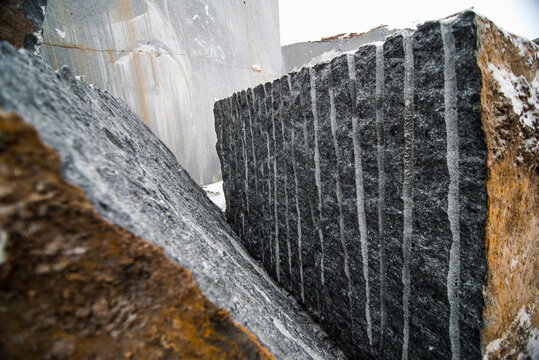Introducing Granite Quarries in South Africa Tradition: A Trip With Quarries
Introducing Granite Quarries in South Africa Tradition: A Trip With Quarries
Blog Article
Uncovering the Rich History and Sustainable Practices of Granite Quarrying
As we base on the precipice of uncovering the elaborate tapestry of granite quarrying, a journey with time discloses not simply the physical act of removing rock however additionally the social and historical significance woven into the really fabric of this technique. From the old beginnings that laid the foundation for modern-day quarrying techniques to the sustainable practices that are shaping the future of this industry, each carve mark on granite surfaces narrates waiting to be uncovered (granite quarries in south africa). The tradition of granite quarrying extends far past simple extraction; it is a testament to human resourcefulness, strength, and the long-lasting appeal of this majestic rock
Ancient Origins of Granite Quarrying
Dating back to old human beings, the method of quarrying granite has actually been an indispensable component of human history and building innovation. The earliest evidence of granite quarrying go back to ancient Egypt, where enormous pyramids and intricate sculptures were crafted from this durable stone. The Egyptians used primitive devices to remove granite blocks from quarries, showcasing the value of this product in their monumental constructions.
Moving ahead in background, the Greeks likewise made significant contributions to the quarrying of granite. The Greeks made use of granite in different architectural marvels, such as holy places and statuaries, demonstrating their skill in shaping and sculpting this sturdy rock. The Romans even more refined the methods of quarrying granite, using sophisticated tools like knives and hammers to extract and form granite for their iconic structures.
Through the centuries, the technique of quarrying granite has evolved, with contemporary technologies enhancing efficiency while preserving the ageless allure of this natural stone - granite quarries in south africa. From old people to contemporary building contractors, the legacy of granite quarrying remains to shape our world
Advancement of Quarrying Strategies
The evolution of quarrying methods has been marked by a continual development in the direction of higher performance and precision in removing granite. Early quarrying techniques included hands-on labor with fundamental tools such as knives, hammers, and wedges to extract granite blocks from the earth.
Developments in computer-controlled tools and 3D modeling have maximized quarrying procedures, leading to very little ecological impact and boosted sustainability techniques. As the need for granite continues to increase, the development of quarrying strategies remains integral to conference market requires effectively and sustainably.
Social Relevance of Granite
Granite holds a profound cultural importance throughout different worlds as a result of its long-lasting existence in architectural masterpieces and prized monuments. From the magnificent pyramids of Egypt to the detailed makings of the Angkor Wat holy place in Cambodia, granite has actually been a product of selection for sharing magnificence and longevity in cultural heritage. In old Rome, granite columns adorned temples and public buildings, symbolizing strength and permanence. The cultural relevance of granite expands beyond its physical characteristics; it embodies durability, security, and eternity, making it a sign of withstanding heritages and traditions.

Sustainable Practices in Quarrying
Amidst the abundant background of granite quarrying and its social significance exists a growing emphasis on sustainable techniques within the market. As ecological awareness and issues concerning resource exhaustion have actually heightened around the world, the quarrying sector has progressively embraced sustainable approaches to lessen its effect on the environment and bordering neighborhoods.

Moreover, recovery and rehab of quarry websites post-extraction are important to sustainable practices. By bring back quarried locations to a natural or helpful state, such as creating wild animals habitats or leisure spaces, quarriers can balance out the environmental impact of their operations and contribute positively to the regional ecosystem.
Legacy of Granite Quarrying
With a historic background soaked in craftsmanship and industrial progression, what sustaining influence has granite quarrying left on the landscape of modern-day culture? The legacy of granite quarrying transcends mere removal practices; it has actually formed architectural wonders, metropolitan landscapes, and social heritage worldwide. The durable nature of granite has made it a favored choice for monoliths, structures, and facilities, standing as a testimony to the ability and virtuosity of quarry employees throughout generations.
Moreover, the financial footprint of granite quarrying can not be neglected. The market continues to provide employment chances and drive neighborhood economies in regions where granite removal is widespread. It has also spurred technological innovations in quarrying techniques and tools, leading to a lot more reliable and sustainable methods.
In regards to his explanation sustainability, the heritage of granite quarrying consists of initiatives to reduce ecological effects useful source through recovery projects and accountable resource monitoring. By balancing financial interests with ecological stewardship, the sector strives to guarantee that future generations can remain to take advantage of this long-lasting all-natural source.
Verdict

Report this page